In 2018 my granddaughters’ school organized a Commemorative tour of WWI and WWII battlefield sites to honor the 100th anniversary of the WWI Armistice. Historians note that WWII was really a continuation of WWI following a pause to gather up a new generation for the continuing slaughter that is now to be driven by even fiercer and more evil demons.
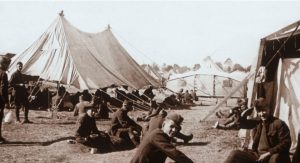
Our route through the Belgian countryside leading to the northern town of Ypres displays to the viewers spring green fields, red brick farmhouses and barns on obviously prosperous farms and, seemingly out of place, clusters of mottled beige tombstones.
These carefully tended cemeteries are grouped ten graves here, fifty there, a hundred just there in the copse (“did you see it?”), and thousands on the ridge. These markers of a now century old struggle signal to the viewer, if they listen carefully, a suffering and loss not in the realm of thought or experience of today’s citizens of the West.
Here in these cemeteries rest the fallen of the British Empire, Tommies, who like their French Poilus comrades, their German enemy and later the American Doughboys endured a battlefield seemingly, conjured in Dante’s Hell. The town of Ypres and its environs, our destination, became the final resting place of over a quarter million British lads. In the four years of war this city featured the most desperate of struggles with the town itself ground to dust and powder.
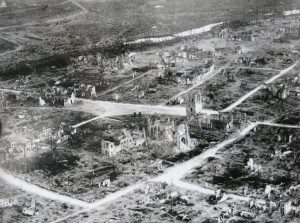

In a slow stroll through these cemeteries, these ‘stiller towns’ as AE Houseman noted, what shocks the Stroller most are the ages carved into the tombstones. Interred are men mostly in their late teens or early twenties.
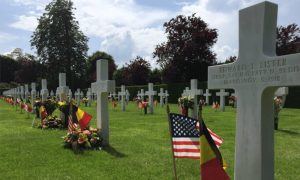
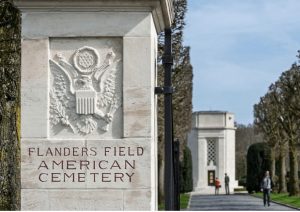
A few have epitaphs from family, themselves long gone, and others reflect an Unknown soldier, grieved assuredly by someone left behind who never knew the fate of their loved one. Almost a million British souls endured this pathos. And the Stroller asks reasonably-why?
History answers: The British dead at Tyne Cot lit a Signal Flame to guide future generations to a New World.
Debates continue today on the cause and fault of the Great War. Whatever may be your conclusion, this soldier concludes from this hundred-year distance that the citizens of these combatant countries were poorly served by incompetent generals, and callously indifferent political leaders. The monarchs of the Triple Alliance and Entente were feeble in mind and body, ill-suited in capabilities or vision to lead their great nations.
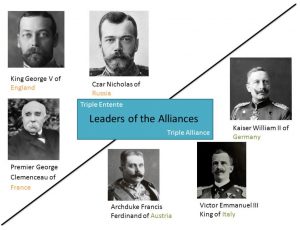
The societies created by their rule were unequal in the dispersion of wealth and privilege and hid many fault lines ready for rupture. To heal these societal ills would require a convulsion, as those who held power were not about to give up their wealth or position. The Great War, stoked by their own incompetence, unintentionally provided the necessary and inevitable societal collapse needed to create the freer and prosperous Europe of today.
This convulsion, rather than create a new and better Europe, instead unleashed new demons. Destroying these demons steered the Tipperary road through Omaha Beach to where it ended at the fall of the Berlin Wall and Soviet empire in 1989.
The American dead at Aisne-Marne and Colleville sur Mer carried the Signal Flame from the British dead at Tyne Cot then passed to Cold War era Americans, dead and living. The Cold War generation brought the conflict to a close at the Berlin Wall in 1989, ironically in November seventy years after the Treaty of Versailles.
I suspect that the throngs of Europeans clogging the streets of Paris, Bruges, Ghent, Venice, and Florence during spring breaks don’t link their freedom and prosperity to the Tommies interred at Tyne Cot and the Americans buried at Flanders Field. But one town does remember- Ypres, Belgium. Every night at 8 PM for now over 31,000 nights the city honors the fallen of the British Empire who gave their lives in that struggle in and around their city. The ceremony known as The Last Post is held at the Menin Gate, an Arc de Triumph style monument overlooking the city’s main square.
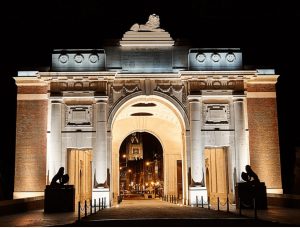
Most recently, the Australians hosted the ceremony to honor their heroes with the laying of wreaths. At the closing of the ceremony that evening, a drum and fife band marched off to the strains of “It’s a Long Way to Tipperary.” Indeed it was a long, long blood stained road, but at the end of the march, an Angel sings: “Hallelujah, Hallelujah, a new world is here”.
Thanks, Dick, a good reminder of the heavy price paid by our forebears.
Well worth the trip. Helps people understand a little more about the lives behind the pages in the history text.
Pete– had a big impact on my granddaughters- daughter also- who had never been to Normandy and had never been able to visualize the beaches and heights above the beaches. My granddaughters actually went to the Menin ceremony twice– both nights we were in Ypres. DW
Great contribution to The Days Forward, Dick. You present a poignant look at the sweep of history of the last century. I hope you are right about its culmination in 1989. I don’t want to think we are simply enjoying another pause and the demons are still lurking.
Pete— well we’ve tamped them down for 30 years at least– thanks DW
Well done, Dick!
Take a look at a Menin Gate video: https://www.youtube.com/watch?v=ND78FKdCkJc
Best regards & BOTL,
Bill
Bill- thanks for the video — this was just a short time after we were there!! The ceremony had a huge impact on my granddaughters. DW
Beautiful account. With appreciation to Dick for the story and to the citizens of Ypres for their unbroken days of honoring the fallen.
Thanks, Dick. There are many people who do not appreciate the value of remembering … but fortunately many who do. Thank you for reminding us that it is a good and noble thing to remember.